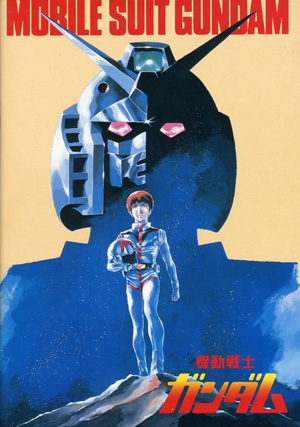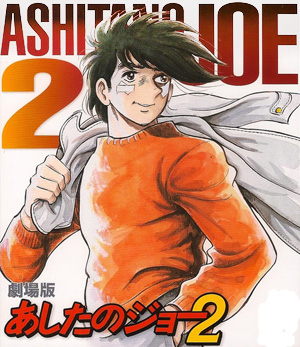
As seen on TV! Poster art
for the first Gundam movie.
In the last breathtaking installment of “2011 is 1981”, I dipped back into the dusty mists of history to investigate the anime titles that debuted on the airwaves a mere three decades ago.
This time, we’ve managed to patiently wait until someone opened the side door, then bum rushed into the movie theater without ever paying for a ticket in order to survey what the big screen anime were like in that fateful long-ago, barely conceivable year of 1981.
Aiding us in this task is the very helpful book “The Art of Japanese Animation II: 70 Years of Theatrical Films”, published by Animage magazine in 1988. They were also responsible for the “25 Years of Television Cartoons” tome that was consulted the other day. But, truth be told, anime film has a much nobler lineage, all the way back to the first anime movie—which 70 Years of Theatrical Films documents as being A Doorkeeper Imokawa Mukuzo from 1917.
The eighties were, of course, boom years for anime productions in Japan. Spurred on by the runaway hits of the seventies, Space Battleship Yamato and Galaxy Express 999 to name two, and the growing financial clout of the “bubble economy”, everyone was getting into the act of producing anime films: publishers, music companies, even greeting card company Sanrio! And just as there was a slight increase in the amount of anime made for TV in ’81 over ’80, the same held true for the movies. 1980 saw 20 animated films released. 1981 had 24.

Not to be confused with ‘Rocky’! Tomorrow’s Joe 2!
But not all of the class of 1981 featured all-new, all-original animation. Compilations of TV animation—digest versions re-cut for feature length—were still popular at the box office. Director Osamu Dezaki’s Ashita no Joe 2 (AKA Tomorrow’s Joe 2) was such a title, depicting bad boy boxer Yabuki Joe in his final heroic bouts in the ring. Did the audience mind knowing the tragic outcome well in advance already from the TV series and the manga (*spoiler* Joe dies in the ring with a smile on his face)? Based on the popularity of the film version, set to be remade in live-action form in 2011, I’d say probably not! And never one to avoid a trend, rather than make a brand new Space Warriors Baldios movie for the theater, Toei opted to cram 34 episodes of story into a two-hour feature.
If I have to single out the most significant releases of ’81, it would have to be the Mobile Suit Gundam I and II movies that opened in February and July respectively. The original Gundam series had finished airing way back in January 1980 as something of a ratings disappointment. But since then, a nation-wide craze for Gundam plastic model kits from Bandai (AKA Gunpla) had revived interest in the show to new feverish levels. Rather than just re-cut the TV show into feature length, which they easily could have done, Sunrise Animation used the opportunity to create many new sequences for the films (in addition to recycling TV footage) resulting in what many consider to be the definitive telling of the epochal One Year War saga.

Hello nudity! Classy poster art
for Sanrio’s Legend of Sirius.
While the Gundam movies raised the bar for serious science fiction anime in Japan, truth be told, cartoons that were “just for kids” were still the main draw of the day down at the local Japanese movie palace. 1981 also saw the release of the second Doraemon feature, along with Kaibutsu-kun (remade as a live-action TV series in 2010), and Toei’s anime version of Swan Lake. As mentioned earlier, Sanrio—a name better known as the parent company of Hello Kitty—also got into the animated movie racket in ’81. Their output for the year included a stop-motion Hello Kitty flick and the fondly remembered fantasy The Legend of Sirius, AKA Sea Prince and the Fire Child (recently released on R1 DVD in the US).
But I’ve been saving the best for last…my absolute favorite anime movie of all time… it too first debuted in that grand old year of 1981, but you’re going to have to read the next astonishing report in the “2011 is 1981” chronicles to find out what it is… unless you can dare to guess it first! But no hints. After all, you’ve got a thirty-year head start!
—
Patrick Macias is the editor in chief of Otaku USA magazine. His blog can be found online at www.patrickmacias.blogs.com

